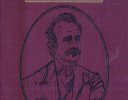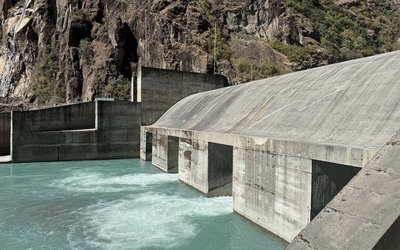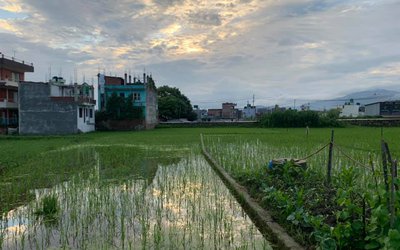
The two volume Miscellaneous Essays relating to Indian Subjects by Brian Houghton Hodgson [London, Brian Trubner and Co., 1880] is a rare collection of essays relating to Nepal, India and Tibet. These essays were published in Bengal Journal and also in other sources on different dates. Most of these essays were his original contribution little benefited by the materials published earlier.
Hodgson [1800-1894] was a great researcher. Apart from the essays in this collection, he published numerous notes on the ethnology and natural history, especially in the Journal of the Asiatic Society. Several collections of his essays and notes were also independently published like the 1874 essays on the languages, literature and religion of Nepal and Tibet, the 1847 study on the Kocch, Bódo and Dhimál tribes, and the 1841 illustrations of the literature and religion of the Buddhists. Hodgson had the opportunity to serve as an assistant to the British Resident in Nepal since 1820. In January 1833 he was appointed the third British Resident himself. He served there until 1843 but was also linked with Nepal and its former territories for many years in different capacities before and after his assignment in Kathmandu. Being fluent in Nepali and Newari, the resources that Hodgson produced on Nepal are numerous. A 2004 book edited by David M. Waterhouse explains his contribution to the Himalayan studies with all seriousness that it deserves. He was of course a pioneer in this area.
The collection Miscellaneous Essays covers a diverse range of topics in different sections. Volume I focuses on the Kooch, Bódo and Dhimál tribes, their vocabulary, grammar, origin, location, numbers, creed, custom, character, and a condition with a general description of the climate they dwell in. It also describes the Himalayan ethnology. This covers comparative vocabulary of the languages of the broken tribes of Nepal, vocabulary of the dialects of the Kiranti language, grammatical analysis of the Vayu language including its grammar. There is an analysis of the Bahing dialect of the Kiranti language including the Bahing grammar. Hodgson has also given the profile of the Hayu and Kiranti tribe of what he describes as belonging to the central Himalayas.
Volume II deals with many diverse topics, mostly unrelated with each other. Examples include the descriptions on the Indo-Chinese borderers and their connection with Himalayas and Tibetans, the Mongolian affinities with the Caucasians, and the comparison and analysis of Caucasian and Mongolian words. There is an effort to describe the route of Nepalese mission to Pekin with remarks of the watershed and plateau of Tibet route from Kathmandu, which is in central Nepal, to Darjeeling now in India. Hodgson also deals with the seven coins of Nepal and the native method of making paper.
Brian Hodgson is the first scholar writing about the administration of justice in Nepal. Volume II of the Miscellaneous Essays gives some accounts of the system of law and police as recognized in the state of Nepal at that time. There are two sub-sections under this title on the law and police, and the law and legal practice of Nepal as regards familiar intercourse between a Hindu and an outcast. The work on the legal system was to help British India and its traders to deal with the status of the rule of law in Nepal. It was intended to enable them to secure justice in cases which the British residency had to settle conjointly with the Nepalese courts. These facts were collected based on the questionnaire that Hodgson framed to receive answers from different respondents knowledgeable about the justice system of Nepal. Some Indian Brahmins at the British Resident’s Office were used to work on them. It was a secret process. Nepal’s pundits who were judged most capable of replying were consulted for information. These two papers (before their inclusion in this book) were submitted by Hudgson to the Asiatic Society and subsequently reprinted in Volume XXVII of the selections from the Records of the government of Bengal.
Referring to the system of ordeal being practised in Nepal to settle disputes, Hodgson writes: “The names of the respective parties are inscribed on two pieces of paper, which are rolled up into balls, and then have Puja offered them. From each party, a fine or fee of one rupee is taken. The balls are then affixed to staffs of reed, and two more are taken from each party. The reeds are then entrusted to two of the Havildars (beadles) of the court to have to the Queen’s Tank; and with Havildars, an examining officer of the court, a Brahman, and the parties proceed thither, as also two men of the Chamakhalak Caste. On arriving at the Tank the examining officer again exhorts the parties to avoid the ordeal by adopting some other mode of setting the business, the merits of which are only known to themselves. If they continue to insist on the ordeal each Havildars each holding one of the reeds, go, one to the east and the other west side of the tank, entering the water about knee-deep. The Brahman, the parties, and the Chamakhalaks, all at this moment enter the water a little away, and the Brahman performs worship to Varuna in the name of the parties, and repeats a secret text, the meaning of which is that mankind knows not what possess in the minds of each other, but that all inward thoughts and past acts are known to the gods Surya, Chandra, Varuna and Yama and that they will do justice between the parties in this cause.”
“When the Puja is over, the Brahman gives the Tilak to the two Chamakhalaks, and says to them, “Let the champion of truth win and let the false one’s champion lose.” This being said, the Brahman of the parties come out of the water and the Chamakhalaks separate, one going to each place where the reed is erected. They then enter the deep water, and at the signal given, both immerse themselves in the water at the same instant. Whichever of them first rises from the water, the reed nearest to him is instantly destroyed, together with the scroll attached to it. The other reed is carried to the court, where the ball of paper is opened, and the name read. If the scroll bears the plaintiff’s name, he wins the cause; if it be that of the defendant, the later is victorious.”
Hodgson also writes about speedy disposal of court cases in Nepal. However, if his finding is related with the grievance of Poet Laureate Bhanubhakta Acharya [1814-1871], who had a civil case at Kumarichok Court in Kathmandu, the finding may have been too polite. The Poet Laureate complained by way of a poem that the court officials continued to detain him saying “tomorrow, …tomorrow and tomorrow” - delaying the final hearing on the petty charge against him. He pleaded that this was very unjust, and that justice delayed was justice denied.
The Miscellaneous Essays is a wonderful collection. It has a wealth of information. Hodgson has obliged the Nepalese legal scholars much by providing information on what may be described as the classical legal system of Nepal. The system was revised only after the promulgation of a new civil code in Nepal in 1854.















